- 时间点:
- 时 分 秒 当前视频时间点
- 问题:
-
- 选项一
设为正确答案
新增选项 - 选项一
- 正确跳转时间:
- 时 分 秒 同锚点时间
- 错误跳转时间:
- 时 分 秒 同锚点时间




恭喜你,回答正确~
很遗憾,回答错误~
正确答案: ,您可以



高中牛津英语模块六以人类积极情感为中心话题,第二单元(What is happiness to you)主要是以通过不同人物寻找快乐的故事来探讨有关快乐主题。word power部分以常见的人类情感emotions为中心,进行了不同情感的词形变化指导、相关习语扩充及以在情景中灵活运用情感表达词汇和方式,内容基础、丰富而实用。我认为学生在语境中学习和掌握适当运用情感表达技巧,对新高考的读后续写中的人物刻画和主题烘托都有直接的意义,让教材教学与新高考能力考查直接挂钩。我觉得可以根据学情和新高考要求,对此教材环节进行灵活取舍,设计续写教学中情感表达微技能训练。
我还结合了牛津英语模块二第一单元中word power环节中的主题space exploration太空探索, 以教材素材为语境依托进行写作微技能训练,让学生在真实生动的语境中学习和运用所学技能,并提升爱国情操,做到快乐学习、学以致用。
此微课中我尝试把以太空探索为背景的读后续写人物情感表达微技能训练作为中心研究对象,希望能让学生真正学得相关微技能助力于读后续写。![]()
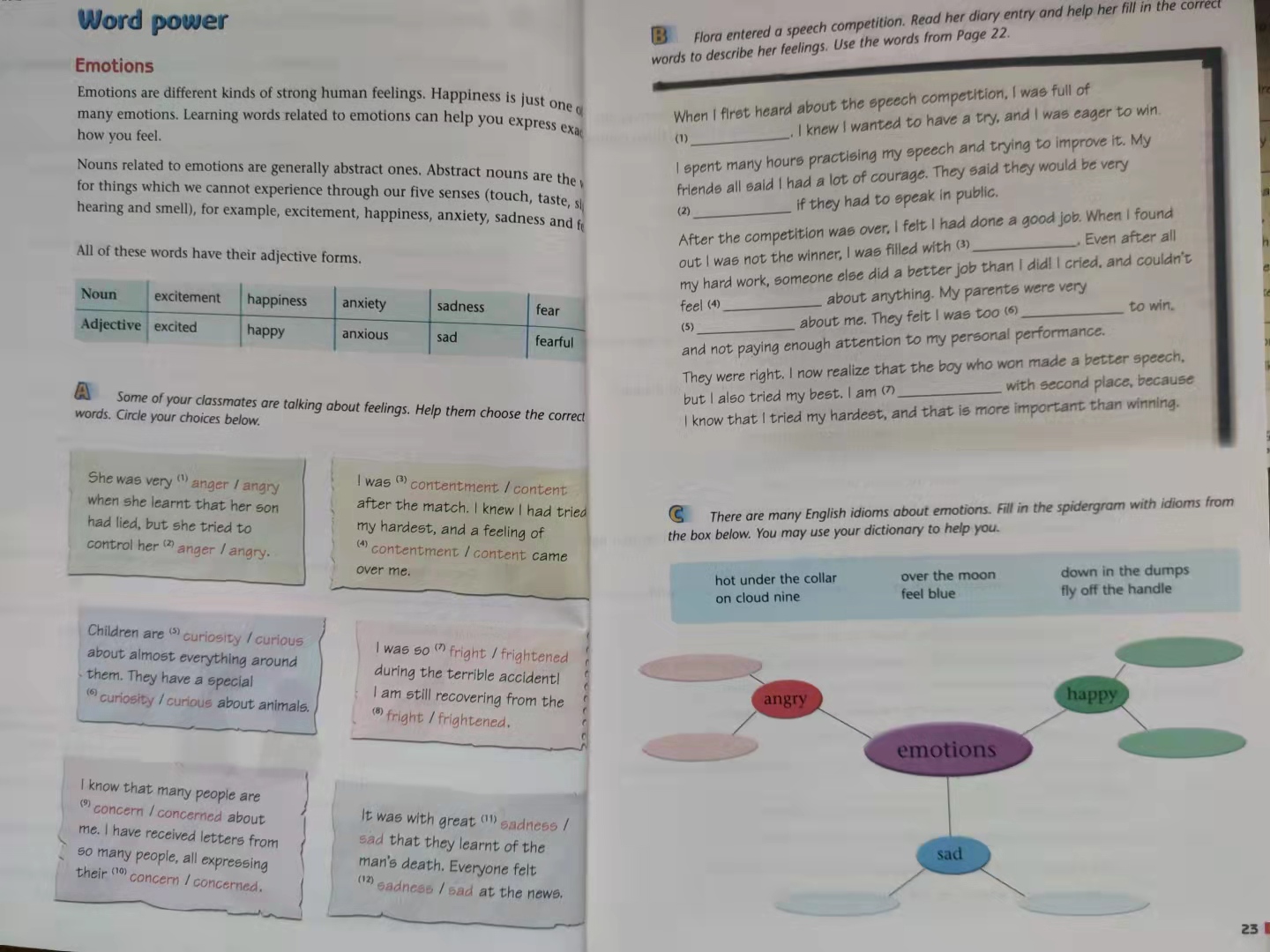
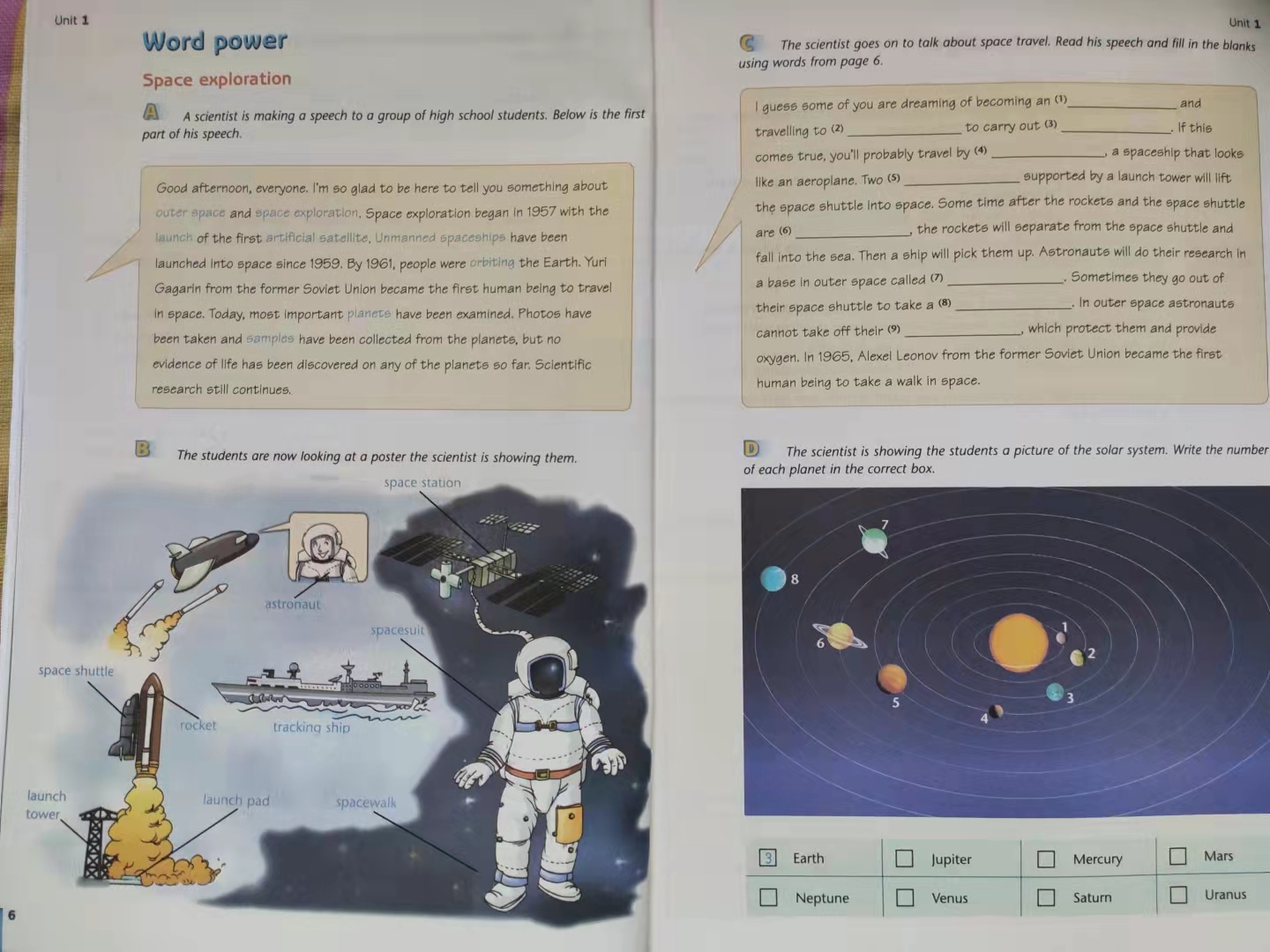
![]()
![]()

高中学生世界观正处于形成阶段,思维活跃,求知欲强,关注时事,乐意于接受新事物,喜欢老师新颖生动直观有效的教学方式。经过初中的学习,学生已具备相当的英语基础,也积累了一定的英语词汇量,同时也具有一定的运用语言知识的综合能力。
一开始时面对新型写作读后续写学生们可能觉得无从下手而有畏难情绪,不愿动笔或写的草草了事。他们的续写作品中人物形象可能干瘪空洞,写作内容不够生动充实,或所写内容不能有效地服务于主题表达。
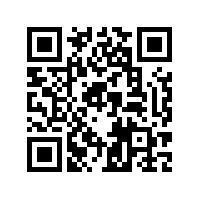
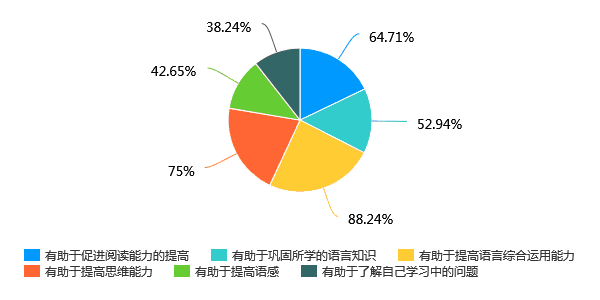
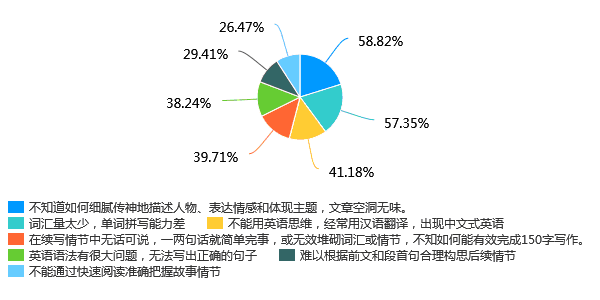
To learn about how to convey emotions in continuation writing by describing three types of expressions;
To improve student’s ability of continuation writing;
To arouse students’ interest and pride in
How to convey emotions more vividly through describing three types of expressions.
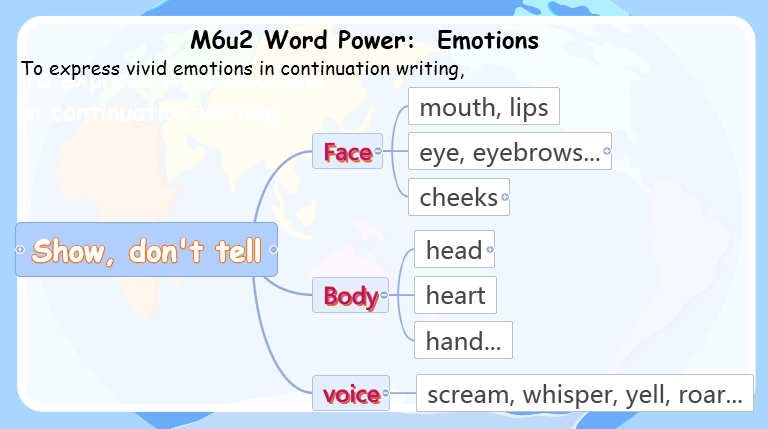
1. A short video about ChangE-4 probe is played to introduce the topic of the class.
Let students learn that China has first successfully landed a spacecraft called Chang’E-4 probe on the far side of the moon.

2. A shortened passage about Chang-E 4 lunar probe(嫦娥四号月球探测器) in the college entrance examination of 2020 is presented to students for background information.(节选自2020年全国卷新课标Ⅰ高考试卷语法填空语篇)
(2020年全国卷新课标Ⅰ高考试卷)语法填空题节选:
Chang’E - 4 lunar probe (嫦娥四号月球探测器月球背面探测)
Chinese researchers hope to use the instruments onboard Chang’E-4 to find and study areas of the South Pole-Aitken basin. "This really excites scientists,"...
3. Ask students to talk about their feeling when watching the amazing news. Then show the topic of the class: How to express feelings and emotions vividly in continuation writing?
[一、导入环节设计意图]
微课在提出学生不知如何表达人物情感的常见写作问题以后,以编辑过的中国发射嫦娥四号月球探测器短视频为导入excited激动情绪表达环节,这是2020年全国卷新课标Ⅰ高考试卷中语法填空题语篇素材,体现高考命题对中国太空梦的热点关注。嫦娥四号的导入环节一方面是让学生思考激动情绪表达的方式,和激发学生的对中国月球探索领先科技的激动、关注和自豪,而且是贯穿整个微课的太空探索主线背景内容;另一方面结合牛津教材模块二space exploration话题和高考真题素材,让学生直接感受教材编制用意和高考命题方向和趋势。
1. Compare two descriptions of emotions in the small continuation writing and tell which one is better.
Finally came Diana’s turn to deliver her speech in the school assembly, which had been prepared for a month. Stepping on the platform, ___________________.
1). she was very nervous and afraid of forgetting all her words.
2). she felt her face burning and palms sweating. To hide her nervousness, she squeezed a smile. With a stiff tongue she whispered her speech to herself for fear of forgetting it.
Guide students to understand No.2 is better because No. 1 is just telling the feeling directly, while No. 2 is showing showing a picture about her vivid feeling through describing the character’s various expressions, which can help readers to imagine the real situation.
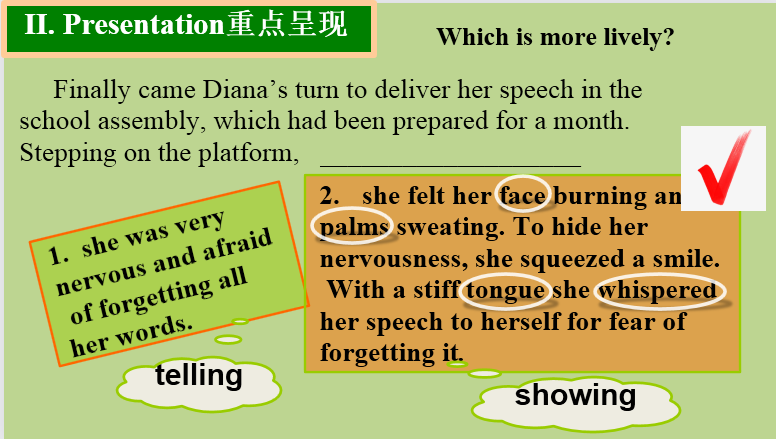
2. Show the teaching video “Show, Don’t Tell” and let students do self study.
Let students study the writing strategy through the video and pay attention to the three types of descriptions.
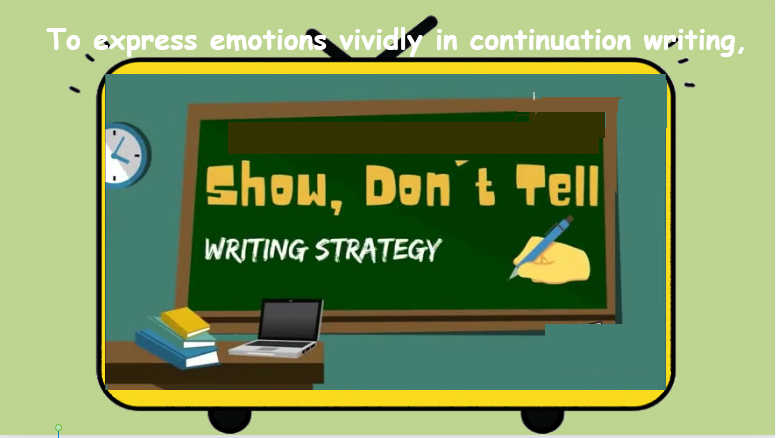
To describe facial expressions:
Happy: His smile broadened from ear to ear.
Angry: Her cheeks turned red and her eyebrows narrowed.
To describe body expressions:
Happy: Hearing the news, the boy clapped his hands and jumped up and down with joy.
Angry: She clenched her fists and jammed them into her sides.
To describe voice expressions:
Happy: He giggled with excitement.
Angry: She growled at me through clenched teeth.
3. Ask students to find out and summarize how to express emotions vividly.
Through the video study, students will find vivid emotions are conveyed by describing facial, body and voice expressions. That is, show, don’t tell.
About facial expressions: mouth, cheeks, eyes, tongue, lips, eyebrows…
About body expressions: heart, herd, hand, arm, knee, foot, leg, shoulder…
About voice expressions: giggle, scream, squeal, roar, groan, murmur, yell, whistle…
[二、重点呈现环节设计意图]
1.在写作方法展示环节中,先举例学生比较直接叙说述事情(tell)和用表情描写(show)两种方式例句让学生比较,可让学生轻松发现细致传神的三维表情描写方法在表达感情中更胜出一筹。
2.然后展示录制的教学微视频“Show, Don’t Tell”,直接引导学生如何进行表情描写来传达情感。视频简洁生动直观,学生会一看就爱不释手,并可以通过提供的微信链接主动多学习几遍。
3.再引导学生整理归纳face/body/voice三种情感表达方式中可描述的相关内容,让学生掌握三种情感表达描写的基本框架。
Ask students to study some descriptions of different emotions and match them with the correct way of description: about face, body or voice?
An activity is designed to help students understand the three basic ways of expressing different emotions vividly and effectively.
Activity : Match the sentences with the proper types of expressions.
1. He felt his face burning.
2. He was so nervous that his throat tightened and legs were wooden-heavy.
3. With a stiff tongue he whispered his speech to himself.
4. His eyes shone like diamonds and lips held in a steady smile.
5. He stood there, his heart beating violently.
6. He stood there tongue-tied and body trembling.
7. She smiled a watery smile and gently looked him in the eye.
8. She held her son’s hand tightly and stroked her fingers through his hair.
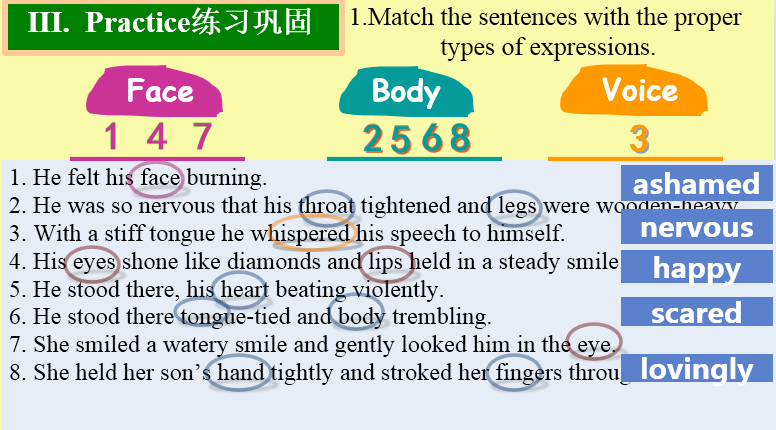
[三、练习环节设计意图]
在情感表达微技能表达方式呈现后,此练习环节可以提供更多情感描写的精典例句给学生比较、学习、模仿,同时鼓励学生通过这些例句的以不同方式分类来理解、掌握和巩固情感表达微技能的用法。
Continue the trip to the far side of the moon and explore more.
Show the homework of a continuation writing about an imaginary passage titled “First Green ‘Baby’ on the Lonely Moon” . Students have got the plot and master the character’s emotions in the last two paragraphs. Show some wonderful homework on the screen and ask the students how to polish the writings and make the emotions more vivid.
Plot: landing --> seeing--> seeding--> waitingà-->sprouting
Emotions: Paragraph 1: disappointed à--> Paragraph 2: excited
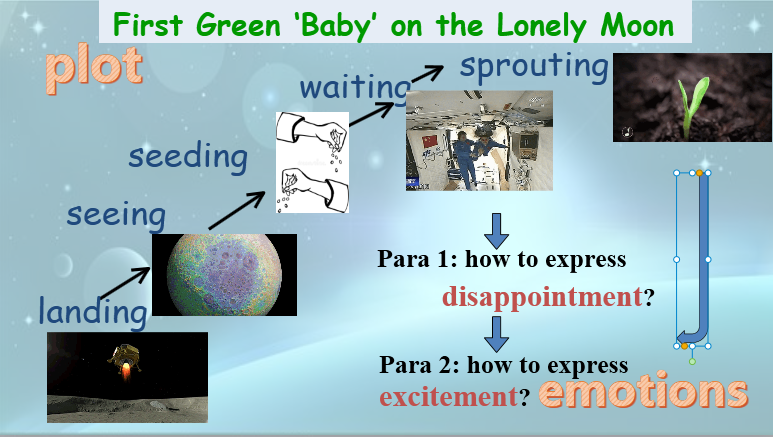
Sample writing with blanks for the last two continued paragraphs is supplied to students on the screen. Encourage students to complete the paragraphs for an end of the story.
In paragraph 1, ask students to match the blanks with proper expressions below.
Para 1: Several silent months passed, unchangeable daily routine life continuing day by day. Fixed procedures were followed every day. Everything remained the same beyond my expectation. I 1 on my face when returning from the seeds container, my eyes dropping to my laps. Thinking of the quiet seeds, I stretched my back, sat down, and 2 . ‘Another same day is gone.’ I 3 to myself with a heavy heart.
A. murmured
B. had a slight frown
C. Raising a finger to my lip
D. I felt my heart racing rapidly
E. buried my head in my crossed arms
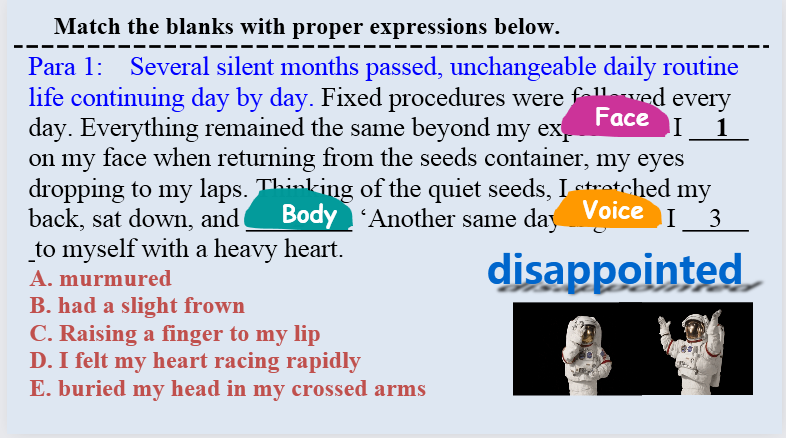
![]()
In paragraph 2, ask students to work in pairs to finish writing the sentences with suitable expressions to show emotions. Then ask the students to introduce their writing on the screen.
Para 2: I was about to lazily slide into my sleeping bag when my partner patted me on the shoulder. I turned back and found a big smile on his face. With his guide, what I saw left me rooted in air. My mouth _________. With efforts in my spacesuit, I jumped to my feet and waved a sign of victory. I felt my heart ___________. Raising a finger to my lip, I ______ to my partner in a trembling voice, ‘Keep quiet. She is sleeping. ’ The first green‘baby’ was finally born on the lonely Moon!
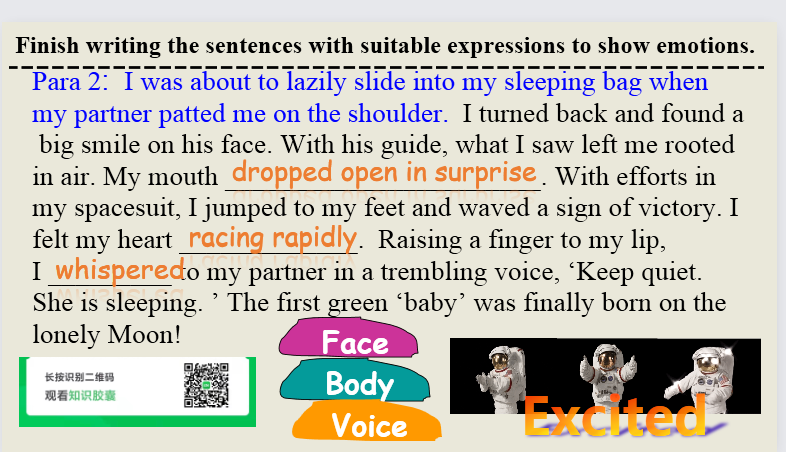
[四、拓展运用环节设计意图]
拓展运用中继续以嫦娥四号月球探索为主题阅读一篇含想象的纪实文章“First Green ‘Baby’ on the Lonely Moon”,指导学生将所学的情感表达微技能恰当运用在语境 中。以正确顺序填入两段续写段落中,最终帮助学生学在读后续写语境中运用情感表达微技能方法。
这个自编素材与导入环节相呼应,一方面是中国月球探索话题的继续和完善,中国首次在月球背面培育种子发芽的成功可激发学生的求知兴趣和写作欲望;另一方面用同一话题的篇章导入和进行方法训练,首尾呼应,让学生在连贯的语境中真正学会运用课堂中所学的show 的方法来表达情感刻画生动人物形象的写作方法,回答微课开始问题--如何通过微技能来表达excited等各种情绪以达到此微课的目标。
Guide students to conclude that by describing facial, body and voice expressions, we should show our emotions creatively instead of telling them directly.
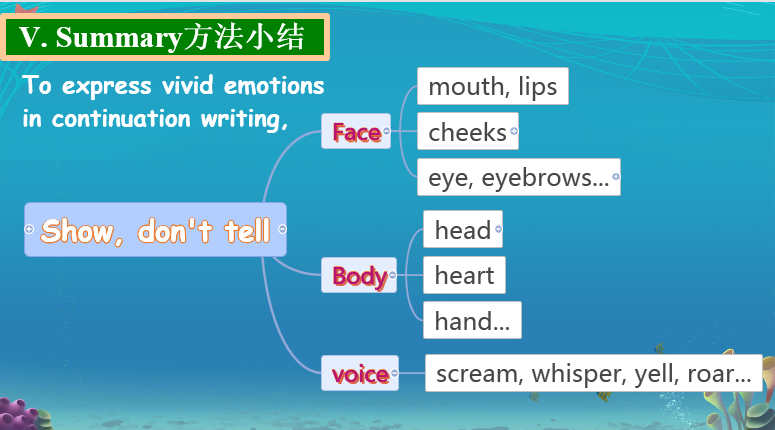
As homework, let students improve the continuation with the ways learnt to express emotions vividly. Meanwhile learn more useful expressions from the related link to describe feelings in continuation writing.
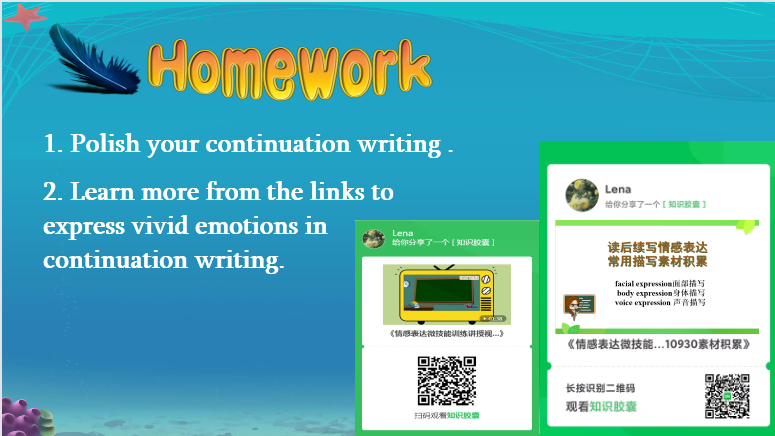
[五、课堂小结设计意图]
课堂小结让学生深刻完整地了解和把握此微课的重点。
作业布置让学生用学得的方法和结合自己的思维来独立完成续写作品,同时可通过链接反复学习相关方法和通过进阶训练掌握、积累更多的相关精典表达。
设为正确答案